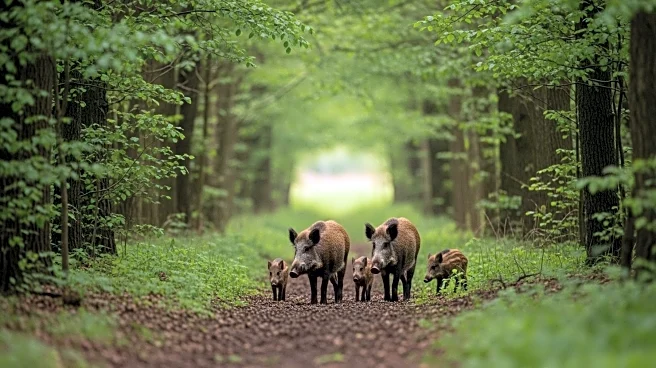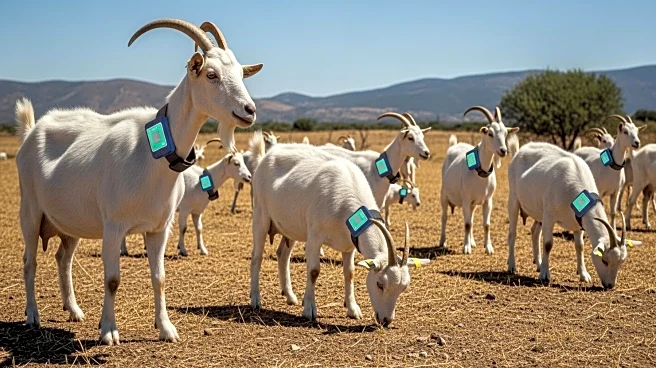What's Happening?
Researchers from The James Hutton Institute, King’s College London, and the Zoological Society of London have developed a model predicting a significant increase in Scotland's wild boar population over the next 50 years. The model forecasts that the population will grow from 1,472 to 2,399 by 2075, with boars expanding into new areas, particularly in the West Highlands and Dumfries and Galloway. The study, titled 'Projecting population dynamics and range expansion of reintroduced wild boar in Scotland using agent-based modelling,' incorporates boar behavior, land cover, and environmental variability. The model suggests that boars will avoid highly urbanized regions but will continue to thrive in less populated areas.
Why It's Important?
The predicted rise in wild boar populations in Scotland has several implications for local ecosystems and communities. While boars can contribute positively to ecosystems through activities like rooting, they also pose challenges such as disease transmission, crop damage, and potential injuries to pets. The model could aid in developing strategies for managing boar populations, including compensation schemes or targeted culling. Additionally, the study highlights the need for further research into socio-economic impacts, such as crop damage costs and hunting revenues, which could influence local economies and land management policies.
What's Next?
The researchers plan to refine the model to account for factors like climate change and changes in land use, which were not included in the current version. They also aim to improve understanding of long-distance female dispersal, which remains poorly understood. Future versions of the model may simulate socio-economic impacts more accurately, providing valuable insights for policymakers and stakeholders in agriculture and wildlife management.
Beyond the Headlines
The resurgence of wild boar in Scotland, once extinct in Britain, reflects broader trends in wildlife reintroduction and conservation efforts. This development raises ethical and practical questions about balancing ecological benefits with human interests, particularly in rural areas where boars may impact agriculture and local communities. The study underscores the importance of interdisciplinary approaches in wildlife management, combining ecological modeling with socio-economic considerations.











